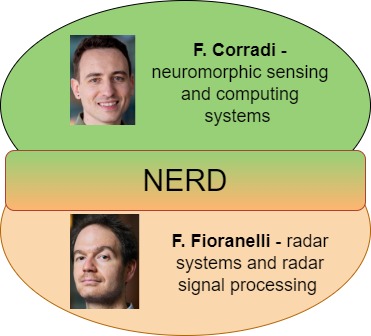News
Entomological radar signal processing and experimental validation in BIT by Hu Cheng.
- Monday, 25 November 2019
Thursday the 14th of November Hu Cheng, full professor, Vice-director of Radar Research Lab in Beijing Institute of Technology (BIT), gave a succesfull lecture about Entomological radar signal processing and experimental validation in BIT.
Hu Cheng, full professor, Vice-director of Radar Research Lab in Beijing Institute of Technology (BIT); he received the B.S. degree in electronic engineering from the National University of Defense Technology in July 2003 and the Ph.D. degree in target detection and recognition from BIT in July 2009. He was a visiting Research Associate in University of Birmingham for fifteen months from 2006 to 2007. Since September 2009, he joined in the School of Information and Electronics in BIT, and promoted to be full professor since 2014. His main research interests include new concept synthetic aperture radar imaging, and the biological detection radar system and signal processing. He has published over 60 SCI-indexed journal papers and over 100 conference papers.
A new generation entomological radar (NGER) for insect individual monitoring was designed, which consisted of a high-resolution phased array radar (HRPAR) and three multi-frequency and fully polarimetric radars (MFFPR). The HRPAR works at Ku-band, and the MFFPR work at X, Ku and Ka-band, simultaneously, with fully polarimetric measurement. To realize species identification and trajectory analysis, the insect biological (including insect body length, mass and wingbeat frequency) and behavioural parameters (including orientation and 3D trajectory) measurement methods were proposed for the NGER.
The insect body length and mass can be measured based on the multi-frequency and fully polarimetric RCS of target. The wingbeat frequency is extracted from the radar carrier phase through micro-doppler analysis. The orientation is estimated from the dominant eigenvector of the insect scattering matrix, and the 3D orientation can be obtained through multi-angle orientation measurements of the three MFFPRs. High range resolution (0.2m) and monopulse techniques are applied to measure the insect 3D trajectory. To validate the proposed methods, a series of experiments were conducted at both anechoic chamber and field, and 523 data sets of 29 insect species were measured.
The experiments successfully validate the effectiveness of the proposed methods. In order to verify the NGER, a small-size entomological radar prototype was built, which works at Ku-band and has the capability of high range resolution and fully polarimetric measurement. The radar can work with vertical-looking mode and scanning mode. It can measure the orientation and wingbeat frequency of individual insects, and the aerial number and density of overflying insects.
Since 2017, a series field experiments were conducted at Langfang, Xilinhot, and Lancang, respectively, which successfully validate the measurement effectiveness of the radar.

